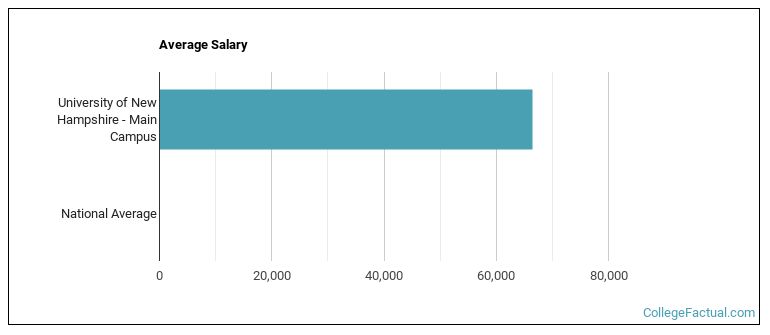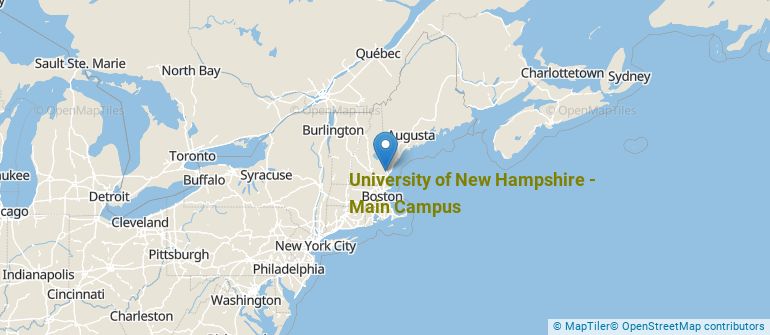 by our College Data Analytics Team
by our College Data Analytics Team
College Factual recognizes the best colleges and universities in its annual rankings. These rankings include categories for best overall colleges, best colleges for each major, best value schools, and much more.
University of New Hampshire - Main Campus was awarded 98 badges in the 2025 rankings. The highest ranked major at the school is general biology.
Explore the best ranked schools for the programs you are most interested in.
College Factual ranked UNH as #151 out of 2,152 colleges and universities in the country on its 2025 Best Colleges list. This puts it in the top 10% of all schools in the nation. This is an improvement over the previous year, when UNH held the #233 spot on the Best Overall Colleges list.
Out of the 17 colleges in New Hampshire, UNH is ranked at #2.
See all of the rankings for University of New Hampshire - Main Campus.
University of New Hampshire - Main Campus has an acceptance rate of 87%, so it is easier to gain admission to this school than some others. Still, the admissions staff will examine your application closely to make sure you're a good fit for UNH.
About 39% of students accepted to UNH submitted their SAT scores. When looking at the 25th through the 75th percentile, SAT Evidence-Based Reading and Writing scores ranged between 570 and 660. Math scores were between 550 and 660.
Learn more about University of New Hampshire - Main Campus admissions.
The student to faculty ratio at University of New Hampshire - Main Campus is about average at 16 to 1. This ratio is often used to gauge how many students might be in an average class and how much time professors will have to spend with their students on an individual level. The national average for this metric is 15 to 1.
In addition to the student to faculty ratio, some people look at what percentage of faculty members are full-time as a sign of how much time professors will be able to spend with their students. This is because part-time teachers may not be be on campus as much as their full-time counterparts.
The full-time faculty percentage at University of New Hampshire - Main Campus is 74%. This is higher than the national average of 47%.
University of New Hampshire - Main Campus has a freshmen retention rate of 86%. That's a good sign that full-time students like the school and their professors enough to want to stick around for another year. It's also a sign that the admissions team did a good job in choosing applicants who were a good fit for the school.
Students are considered to have graduated on time if they finish their studies within four years. At UNH the on-time graduation rate of first-time, full-time students is 69%. That is great when compared to the national average of 33.3%
Find out more about the retention and graduation rates at University of New Hampshire - Main Campus.
During the 2017-2018 academic year, there were 11,787 undergraduates at UNH with 11,382 being full-time and 405 being part-time.
| $0-30 K | $30K-48K | $48-75 | $75-110K | $110K + |
|---|---|---|---|---|
| $17,214 | $17,573 | $19,641 | $23,879 | $27,997 |
The net price is calculated by adding tuition, room, board and other costs and subtracting financial aid.Note that the net price is typically less than the published for a school. For more information on the sticker price of UNH, see our tuition and fees and room and board pages.
Almost 66% of college students who graduated with the class of 2018 took out student loans, but that percentage varies from school to school. At UNH, approximately 58% of students took out student loans averaging $10,862 a year. That adds up to $43,448 over four years for those students.
Get more details about paying for University of New Hampshire - Main Campus.

See which majors at University of New Hampshire - Main Campus make the most money.
Get more details about the location of University of New Hampshire - Main Campus.

Contact details for UNH are given below.
| Contact Details | |
|---|---|
| Address: | 105 Main St., Thompson Hall, Durham, NH 03824-3547 |
| Phone: | 603-862-1234 |
| Website: | www.unh.edu/ |
| Most Popular Majors | Bachelor’s Degrees | Average Salary of Graduates |
|---|---|---|
| Business Administration & Management | 695 | $57,015 |
| General Biology | 183 | $45,346 |
| Nursing | 183 | $77,271 |
| General Psychology | 182 | $38,229 |
| Social Work | 152 | $37,395 |
| Communication & Media Studies | 148 | $43,551 |
| General Business/Commerce | 140 | $57,378 |
| Computer Information Systems | 121 | $75,156 |
| Mechanical Engineering | 108 | $70,865 |
| General English Literature | 105 | $34,563 |
Online learning options are becoming more and more popular at American colleges and universities. Online classes are great for students who have busy schedules or for those who just want to study on their own time.
In 2022-2023, 3,599 students took at least one online class at University of New Hampshire - Main Campus. This is a decrease from the 4,368 students who took online classes the previous year.
| Year | Took at Least One Online Class | Took All Classes Online |
|---|---|---|
| 2022-2023 | 3,599 | 686 |
| 2021-2022 | 4,368 | 743 |
| 2020-2021 | 11,691 | 1,331 |
| 2018-2019 | 2,256 | 440 |
Learn more about online learning at University of New Hampshire - Main Campus.
If you’re considering University of New Hampshire - Main Campus, here are some more schools you may be interested in knowing more about.
Curious on how these schools stack up against UNH? Pit them head to head with College Combat, our free interactive tool that lets you compare college on the features that matter most to you!
Footnotes
*The racial-ethnic minorities count is calculated by taking the total number of students and subtracting white students, international students, and students whose race/ethnicity was unknown. This number is then divided by the total number of students at the school to obtain the racial-ethnic minorities percentage.
References
More about our data sources and methodologies.